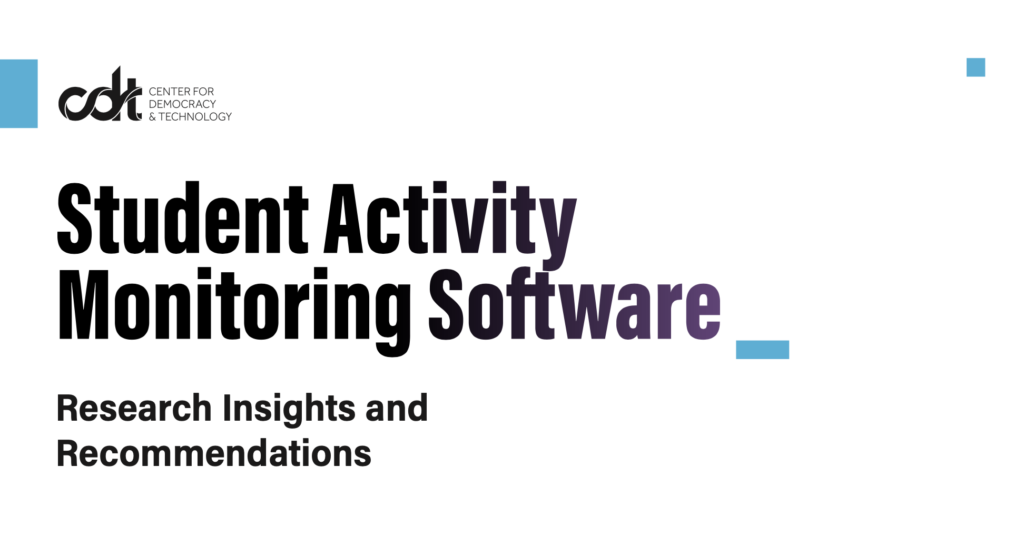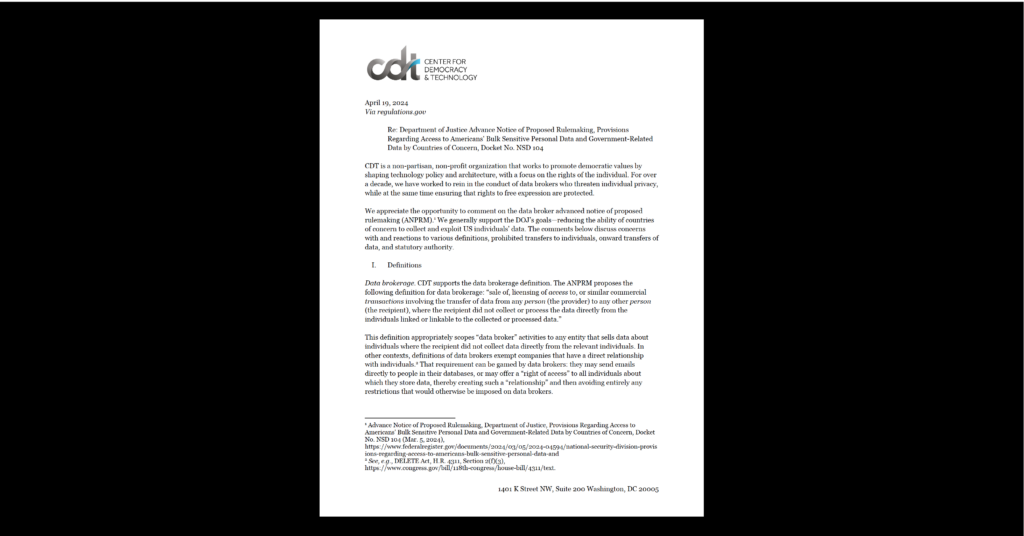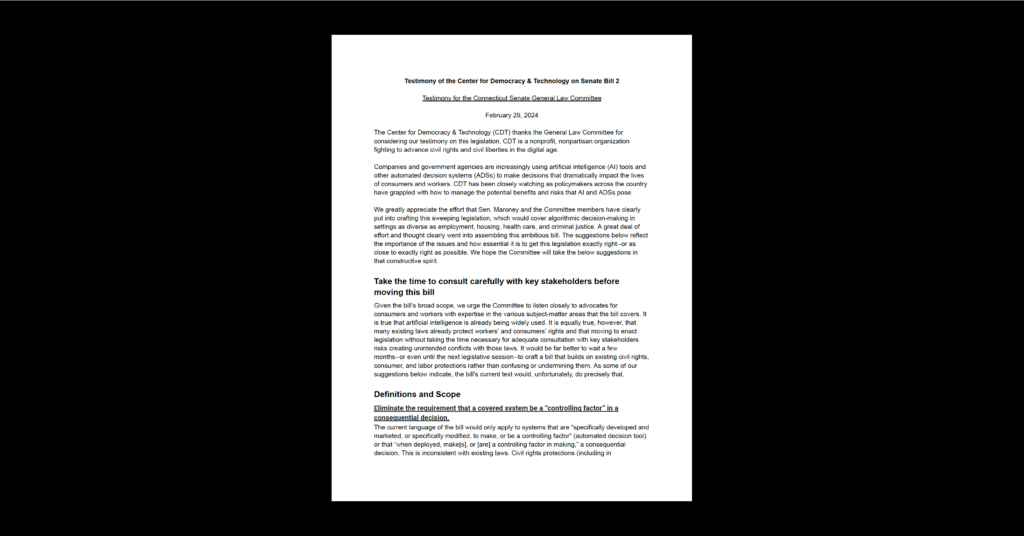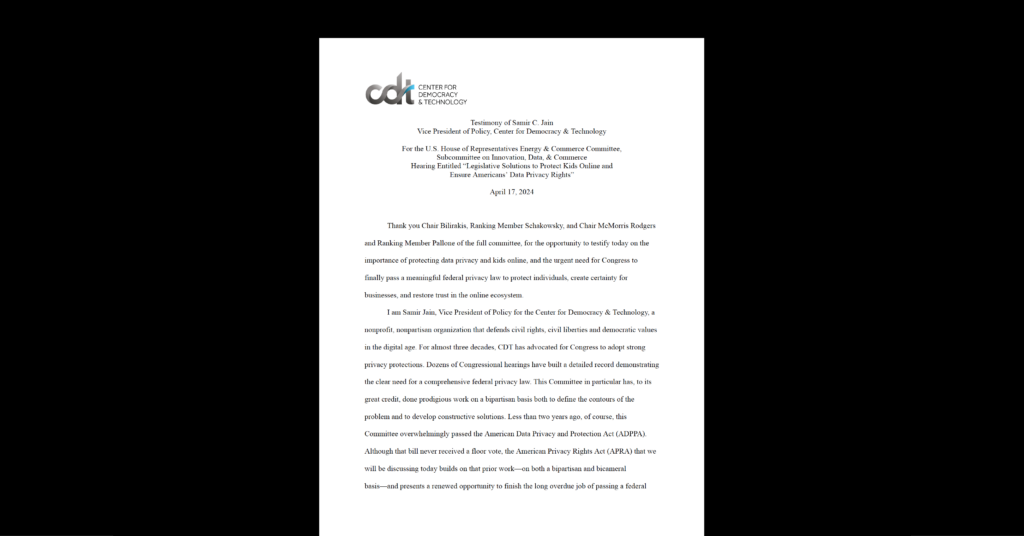CDT Research, Equity in Civic Technology, Privacy & Data
Student Activity Monitoring Software: Research Insights and Recommendations

The past few years have seen widespread adoption of software that monitors students in K-12 schools across the country. These tools provide teachers and schools with the ability to filter web content, monitor students’ search engine queries and browsing history, view students’ email, messaging, and social media content, view the contents of their screens in real time, and other monitoring functionality. Fueled in part by pandemic-era remote learning needs, schools have adopted this technology with the aim of measuring and improving student engagement and keeping students safe online.
Yet, despite their popularity, these tools raise critical red flags for student equity and privacy protection.
To better understand how student activity monitoring software impacts those who have the most at stake — students themselves — CDT surveyed teachers, parents, and students about their experiences and attitudes toward these tools. Three key takeaways emerged:
- Student activity monitoring software is widely used in K-12 schools;
- Teachers, parents, and students largely report that the benefits outweigh the risks; and
- Nevertheless, each of these groups express some privacy and equity concerns.
After examining these findings, we will offer recommendations for how to best preserve student privacy when considering the use of these tools.
For more information on our research, see our recent blog post discussing the findings, our press release for the report, and our related “Online & Observed” report.
Explore the research slides here for a deeper dive into our survey data.


